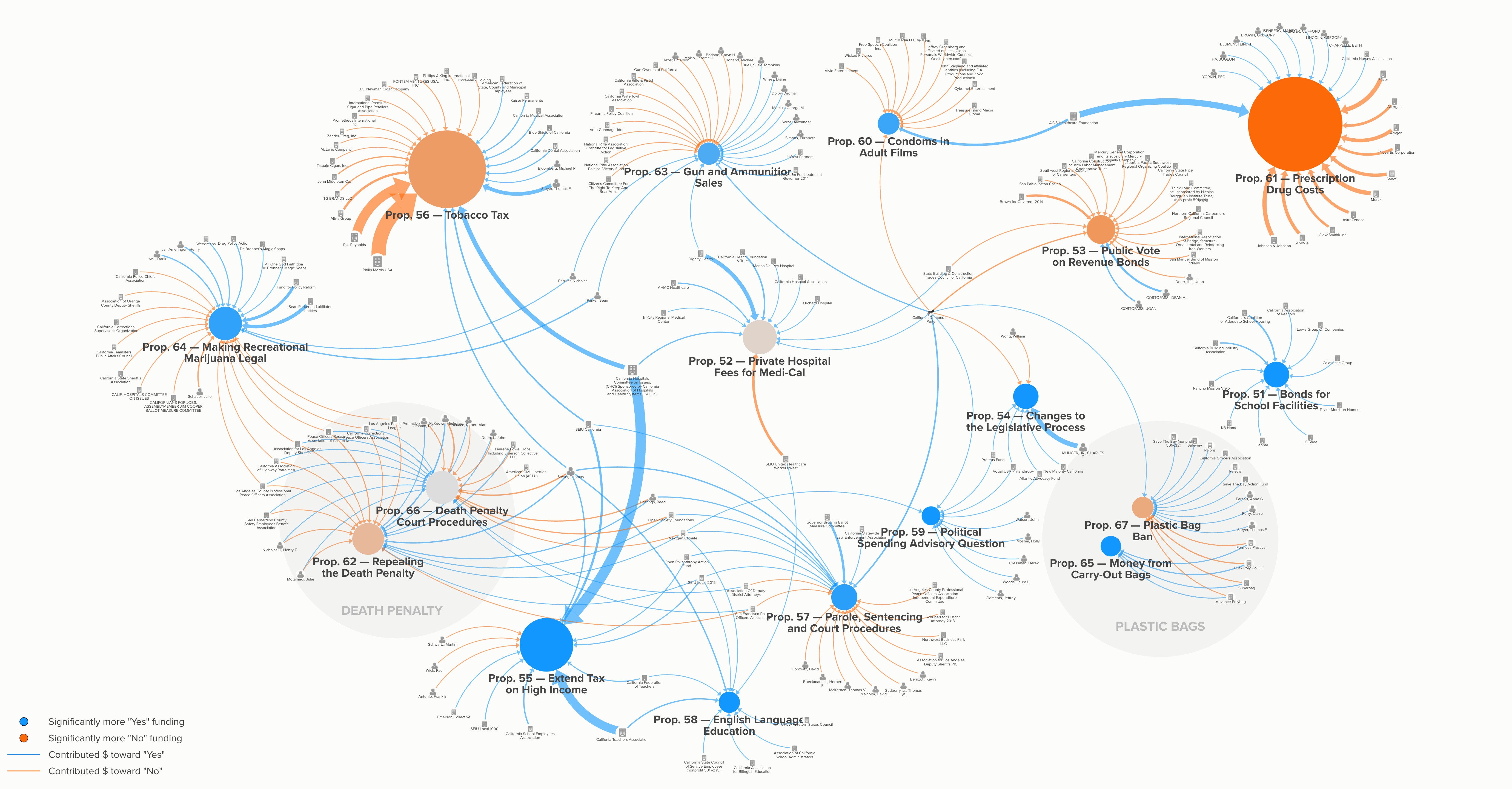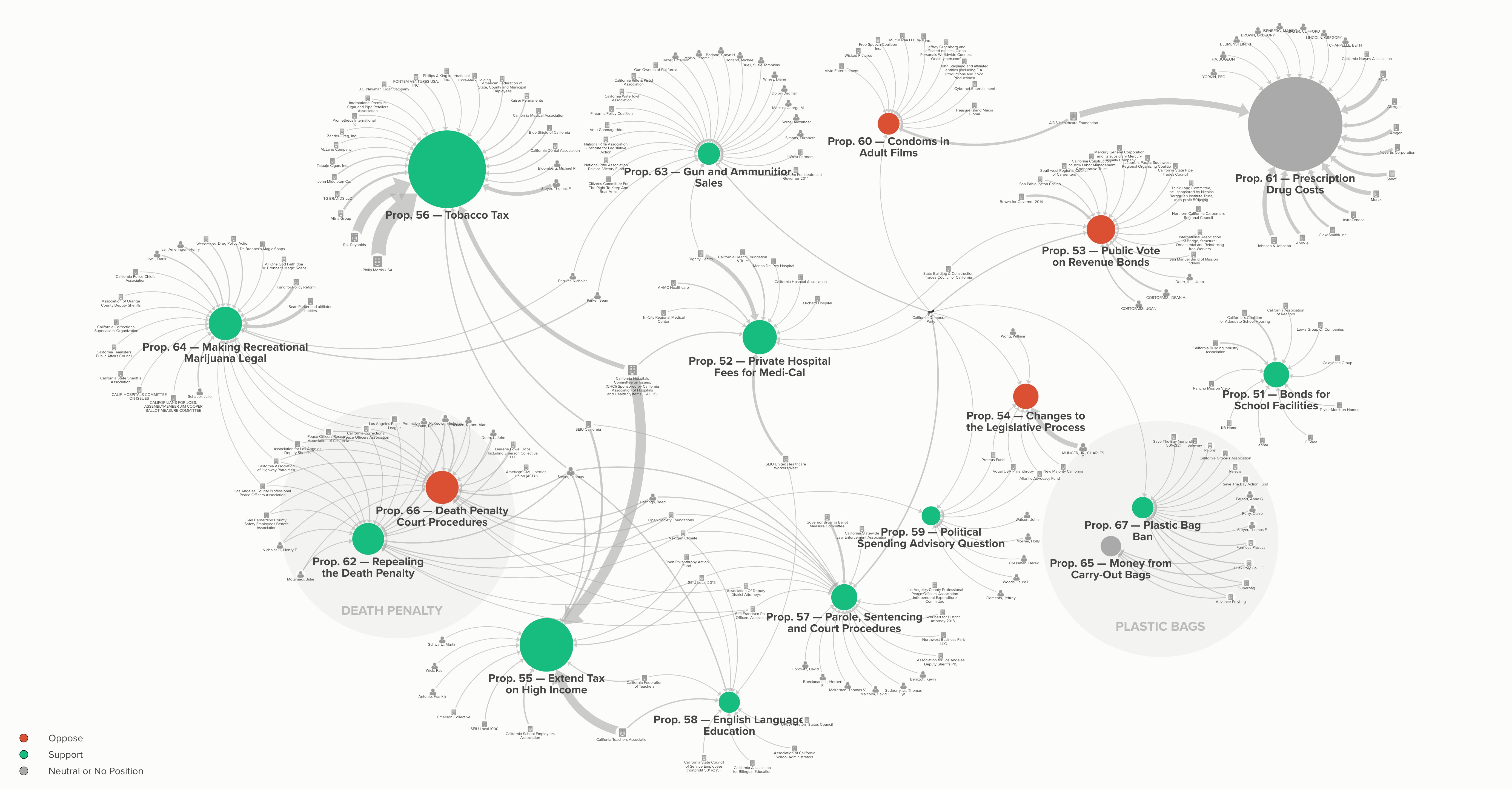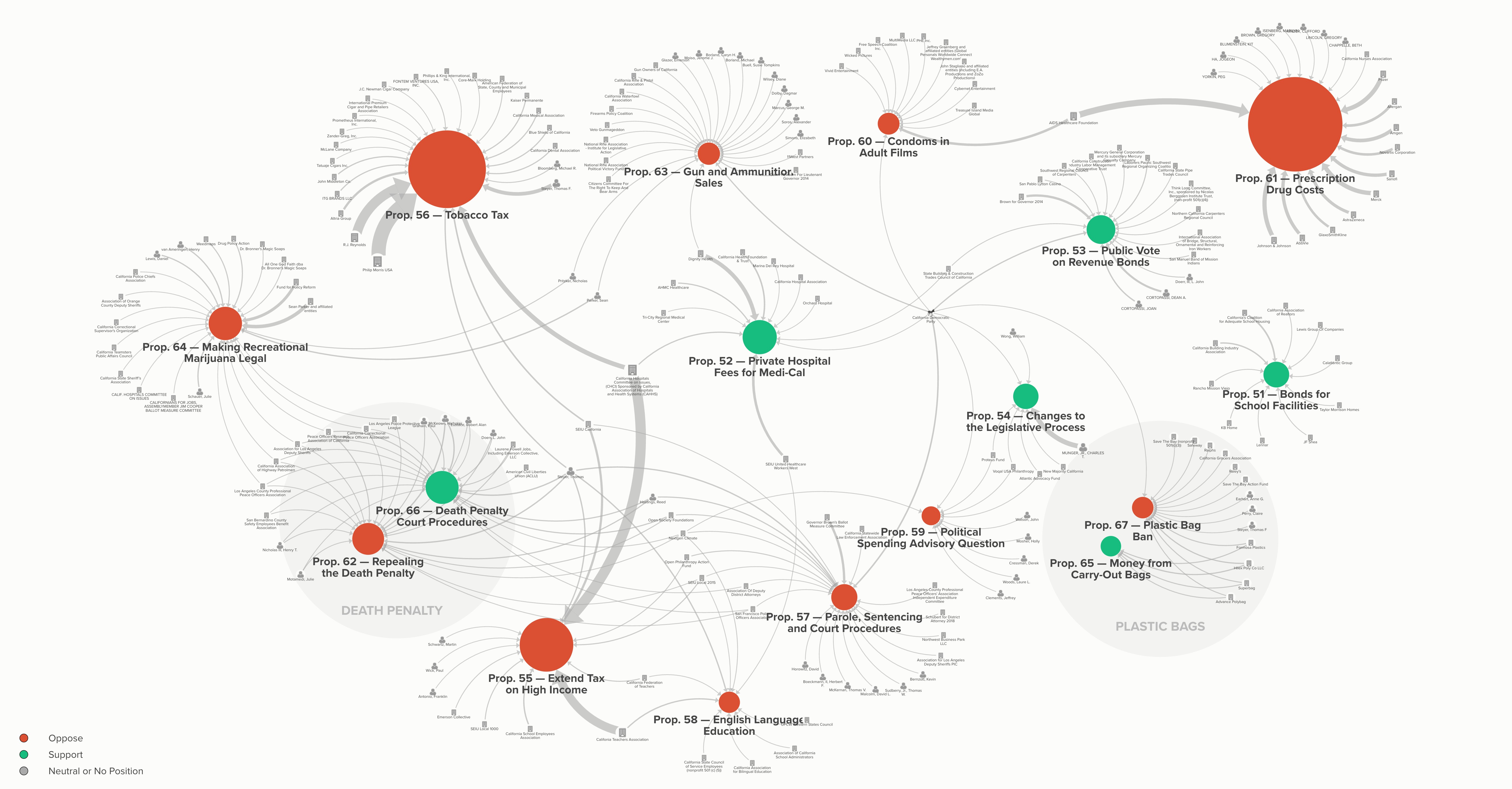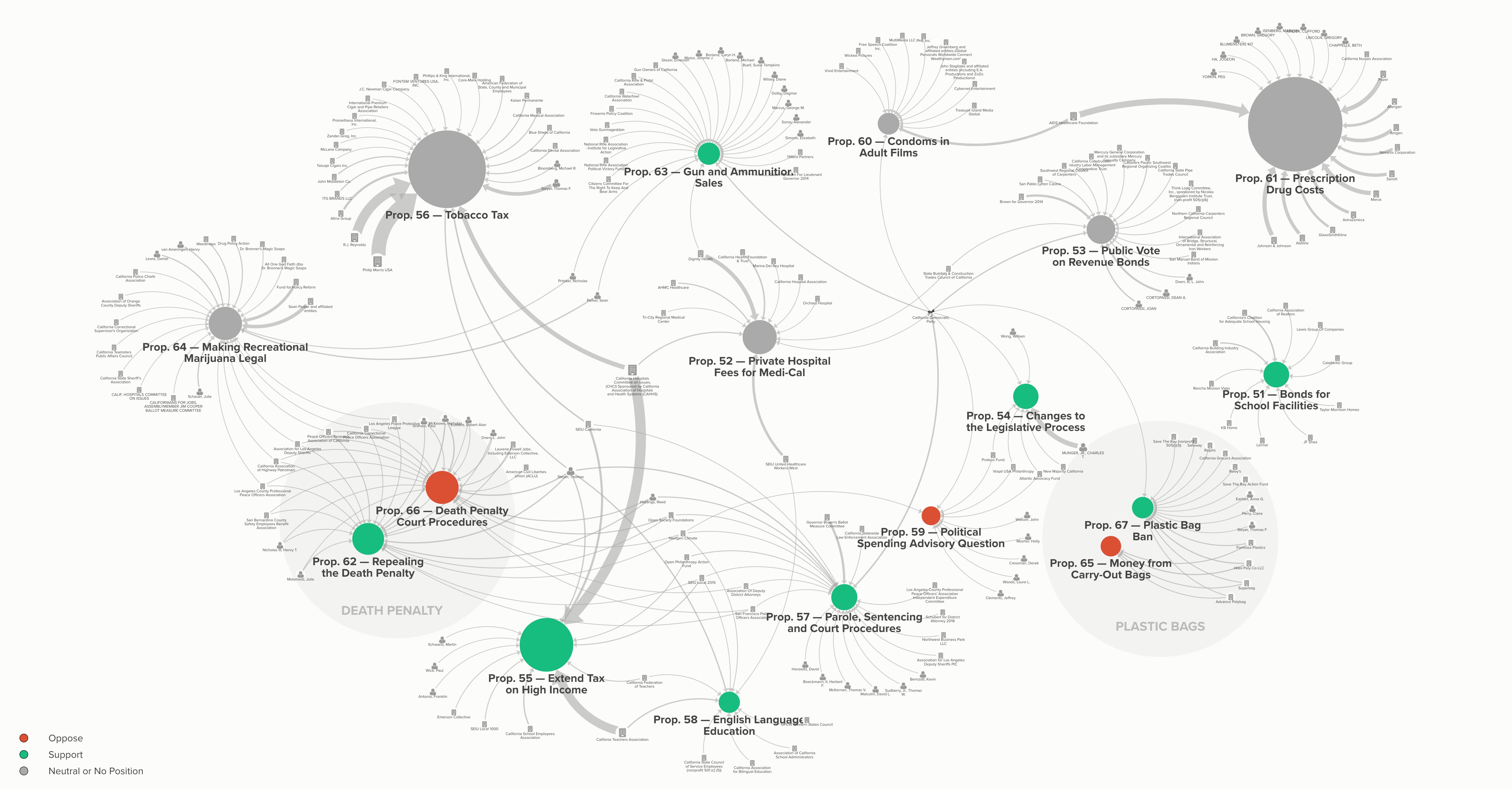The funding landscape of the California ballot
Do you know who is funding campaigns against propositions on your ballot? And who is supporting?
Money talks. And luckily, it has quite a lot to say when it comes to propositions.
I was at an event hosted by the League of Women Voters last week when they shared this advice:
Who are the real sponsors and opponents of the measure? Check where the money is coming from...
After a quick visit to VotersEdge we had an idea... What if we visualized the funders – both for and against – of all the propositions on the California ballot?
55 people, 140 entities, and 17 propositions later, here's the result:

How to read this map
Propositions are sized based on the total funding contributed to both "Yes" and "No" votes (the field within Kumu is "Money raised for" and "Money raised against"). We were able to quickly sum these values using Kumu's new computed fields. We've colored the circles based on the relative amount of "Yes" vs. "No" funding so the more orange an element is, the more the "No" funding outweighed the "Yes" funding (and vice versa with blue).
For contributors, we've used separate icons for people versus entities and those are each sized by the total amount of money contributed towards propositions in this ballot. With Kumu we're able to quickly run this by calculating the "degree" metric and then choosing to weight by the "amount" field.
Analyzing party support for the propositions
While we don't condone voting strictly along party lines, it can sometimes be useful to see the different parties' stances on certain issues.



Now it's your turn
If you're a California voter, take the time to explore each of the propositions and go cast your vote on November 8. If you're feeling lost, the League of Women Voters has some great advice on how to analyze a proposition available here.
Not a California voter but interested in working on a similar map for your state? Send us a note.
You can access the full Kumu project powering these visualizations here: https://kumu.io/jeff/ca-ballot-2016#ca-propositions